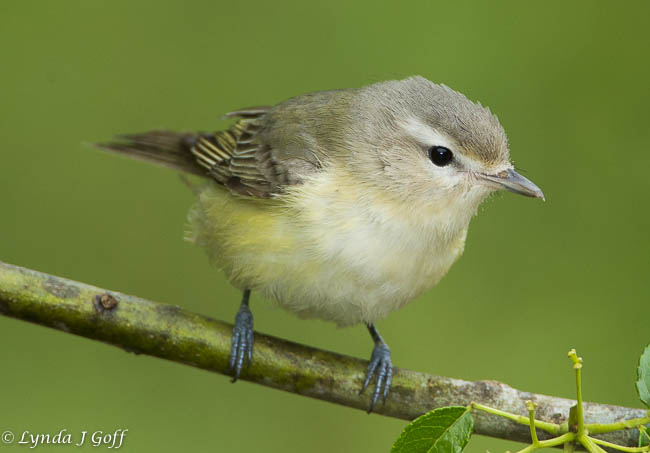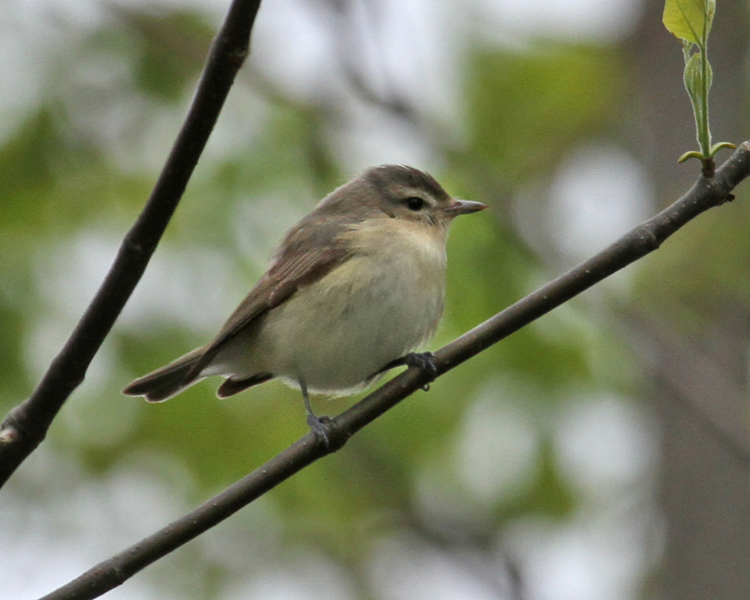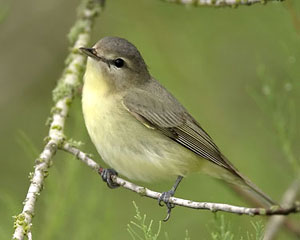
Vireo gilvus
TAXONOMY
Vireo gilva Vieillot, 1808.
OTHER COMMON NAMES
English: Eastern warbling-vireo, brown-capped vireo, Western
warbling-vireo; French: Virйo mйlodieux; German: Sдgervireo,
Braunkappenvireo; Spanish: Vireo Chipe.
PHYSICAL CHARACTERISTICS
About 5.5 in (14 cm). The upper body is uniformly gray, with
white underparts, light-yellow flanks, and a white line over
the eye.
DISTRIBUTION
Breeds widely in southern and western Canada, through most
of the United States, and in part of north-central Mexico; winters
in Mexico and Guatemala.
HABITAT
Hardwood-dominated forests.
BEHAVIOR
A migratory species that defends a breeding territory. The
song is a slow warble.
FEEDING ECOLOGY AND DIET
Feeds on invertebrates gleaned from leaves, flowers, and
branches, and also eats small fruits.
REPRODUCTIVE BIOLOGY
Builds a small, cup-shaped nest that hangs from a forked tree
branch. Lays three or four eggs, incubated by both parents for
about 14 days.
CONSERVATION STATUS
Not threatened. A widespread and abundant songbird, but its
numbers are declining in some parts of its breeding range.
SIGNIFICANCE TO HUMANS
None known, except indirect economic benefits of birding.
Other popular Animals
Photo Gallery of - Warbling vireo




 Animalia Life
Animalia Life